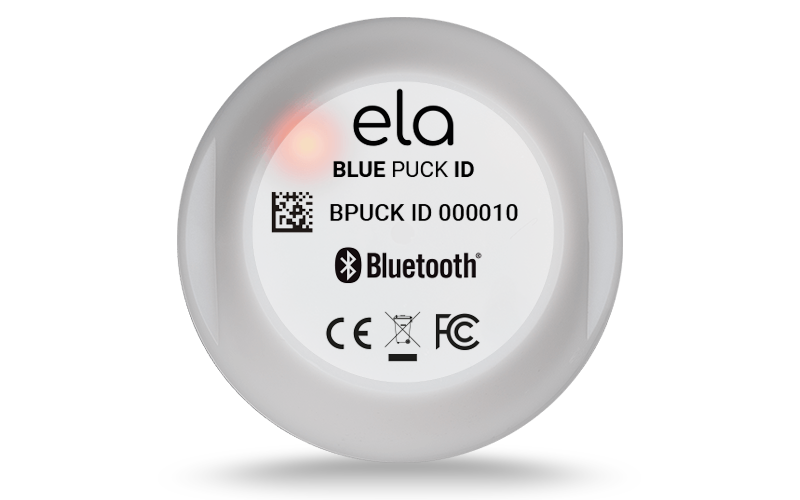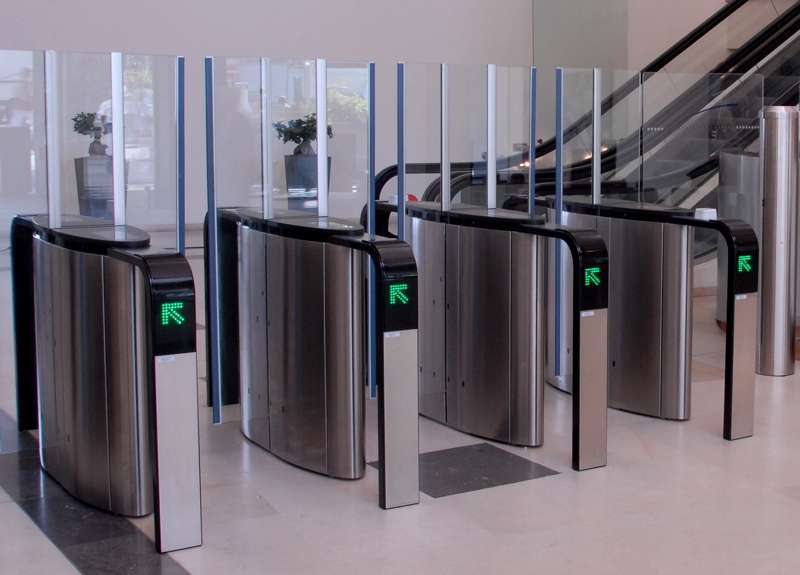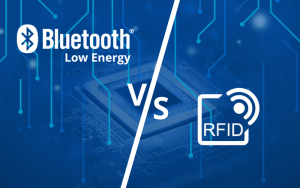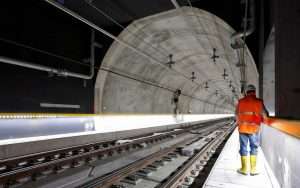What is a beacon? If you’re interested in the world of industrial connected objects, you’ll soon be asking yourself this question. In this guide, we’ll explain in detail what a Bluetooth beacon is, how it works and what it’s used for. According to a study by Report Monitor, released in early 2020, by the end of 2025 the beacon market is expected to be worth 33,700 million US dollars, with the number of devices deployed expected to multiply by 3 each year. The retail sector alone accounts for more than 50% of the market, but in recent years Bluetooth Low Energy technology has seen strong growth in many sectors, including logistics, transport and industry.
What is a beacon? How to define a beacon?
A beacon is a Bluetooth Low Energy (BLE) device belonging to the large family of connected things. This beacon, a few centimeters in diameter, will emit radio waves that can reach a range of several hundred meters and push information that will be picked up by devices with Bluetooth connectivity (Smartphones, computers, tablets, etc.).

One of the main advantages of the wireless communication protocol, BLE, is its low power consumption, giving beacons autonomy of up to 20 years.
Apple was one of the pioneers in the beacon market, launching in 2013 its iBeaconoffering dedicated to wireless beacon developers and manufacturers. Indeed, the iBeacon is not an object in itself, but a data frame format, allowing Bluetooth tags to communicate with iOSdevices. The release of the first beacons was quickly followed by Radius Network’s AltBeacon(an open source/open protocol) in 2014 and by Google with its Eddystonebeacons released in 2015.
Today, there are more than 50 manufacturers of Low Energy Bluetooth tags and many suppliers of technical platforms to interface the tags with the thousands of mobile applications.
How does a beacon work?
What is a beacon made of?
To understand how a beacon works, it is important to know what this connected thing is made of. Inside a beacon you will find: a battery, a microcontroller, an antenna, a radio module, sensors and finally a UUID (Universal Unique Identifier) to identify it.
What infrastructure needs to be put in place?
In reality, what is the necessary infrastructure for the use of beacons?
If you wish to set up a remote identification solution using Bluetooth LE technology, you will need to wireless beacons, a Bluetooth receiver (smartphone, tablets, PC or even dongle, called “devices” in the lingo) and a software/application, allowing you to send data back to your server. Unlike active RFID tags, BLE technology benefits from a large number of compatible devices already installed.
Today many smartphones, laptops, and embedded computers are Bluetooth-enabled. By downloading a mobile application on an store, or software, you can access the information emitted by the tag. Where in RFID, you should have the tag and the receiver from the same manufacturer and often its associated software. Since the Bluetooth protocol is non-proprietary, it allows more freedom and flexibility in the choice of infrastructure.

Discover our wide range of BLE beacons
renowned for their sturdiness and high autonomy
What data does the beacon send?
Contrary to what one might think, a beacon does not send a notification, nor an image. Indeed, the type of data transmitted by the beacons will vary from one frame format to another. Many tag manufacturers offer their own frame format, but let’s take the example of the iBeacon and Eddystone formats, which are the two best known formats on the market today.
For Apple’s iBeacon, the tag is capable of transmitting 3 pieces of information: a reference number (UUID with a length of 16 bytes), and two identification numbers (Major, Minor) that will allow it to be differentiated from all the other tags present around it. The use of this format is often event-driven. It is the application with which the beacon is interfaced that will be in charge of triggering the events.
When the application will be in the beacon field, it will trigger 2 events:
- Wake up the application.
- Allow the application to decide what to do, such as send a push notification or trigger an alert.
The Eddystone, on the other hand, can transmit different types of packets: the Eddystone-UID, which like the iBeacon, emits an identifier composed of two static IDs (NID & BID) and the Eddystone – URL, which can store a compressed URL. Other elements such as maintenance information can be sent through their API (Google Proximity Beacon API’s endpoint diagnostics).
What is a beacon used for?
Having answered the question, “What is a beacon?”, it’s worth asking what a Bluetooth beacon can be used for.
As mentioned in the introduction, beacons were first used in the “retail” field to attract customers at the point of sale by sending them promotional offers. However, for a few years now, this type of connected device has been developing in industrial sectors. Indeed, in the context of the digitization of industry leading to what is called “Industry 4.0”, the automation of certain tasks, the predictive analysis of data or the management of production operations are major issues for industrial companies looking tothe optimization of their performance. We will see 3 examples of the use of Bluetooth tags, but there are many of them. If you would like to know more, you can visit the Bluetooth GIS website.

Automatic identification
The identification of equipment can indeed be automated through the use of Bluetooth beacons. Let’s take the transportation sector as an example. Placing a beacon on the trailer of a truck will allow the driver toidentify the trailerduring hooking and unhooking. In this way, it will make it possible to inventory the trailers and to know their utilization rate.

Tracking of aeronautical equipment
In order to meet increasingly demanding requirements in terms of safety, productivity and image, national and international airport operators are looking to better manage their fleet of non-motorized equipment known as NME, such as stepladders, tow bars or luggage carts. By equipping each equipment with a beacon combined with a GPS box compatible BLE embedded in towing vehicles, this will allow to locate and inventory the entire fleet.

Hands-free access control
Often associated with passive or active RFID technologies, people access control can also be done thanks to Low Energy Bluetooth tags. Proximity access control readers are replaced by beacons. The person wishing to access a site no longer needs an entry badge: his or her smartphone becomes the identification medium. When the user of this application presents himself in front of the secure access, his smartphone receives the information from the beacon and transmits the request to the access management application. The benefits are: detection at a high distance for hands-free access control and removal of the access badge.
What is a beacon going to do to help you?
Beacons respond to many issues, regardless of the sector of activity. Indeed, the possibilities for interaction are infinite without making this wireless way of communication intrusive. In any case, the end user must at least have Bluetooth enabled on his mobile device and have downloaded the third party application that will be connected to the beacons. In the industry, this type of connected object allowing wireless identification has proven its worth and today allows to completely rethink the internal processes of companies.
In addition to low-energy Bluetooth identification beacons, some manufacturers also offer wireless sensors to addressSmart Building and Smart-Cities issues. We will come back to this subject in a future article.





